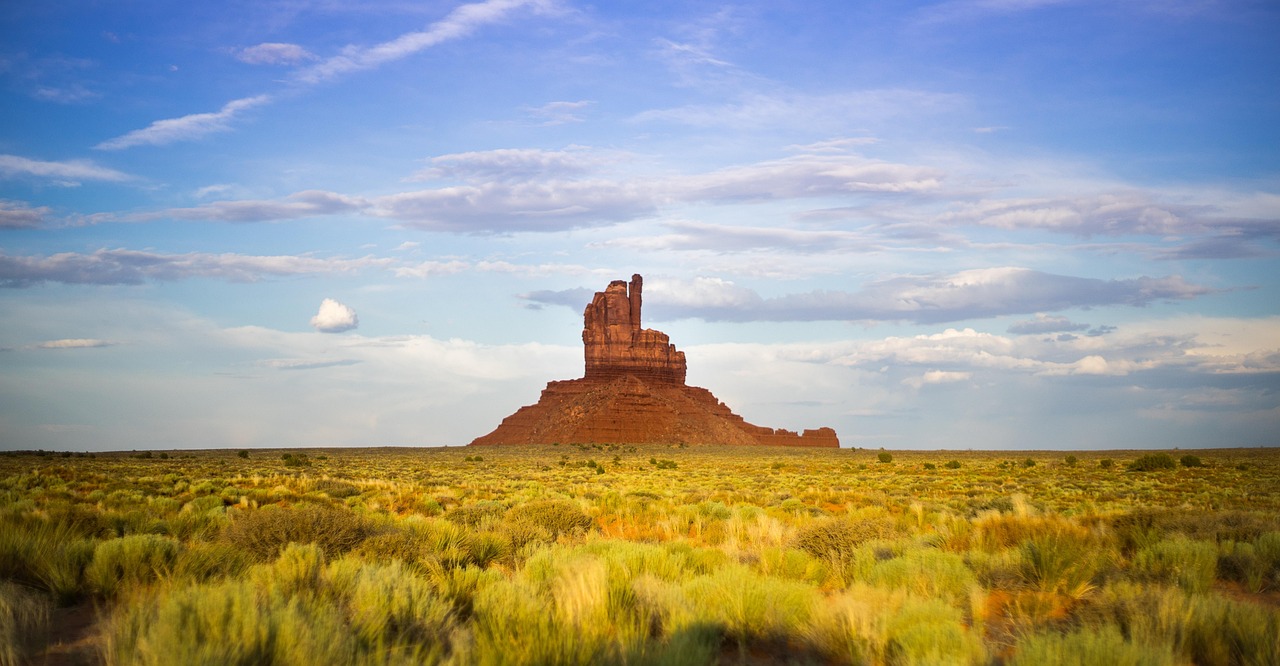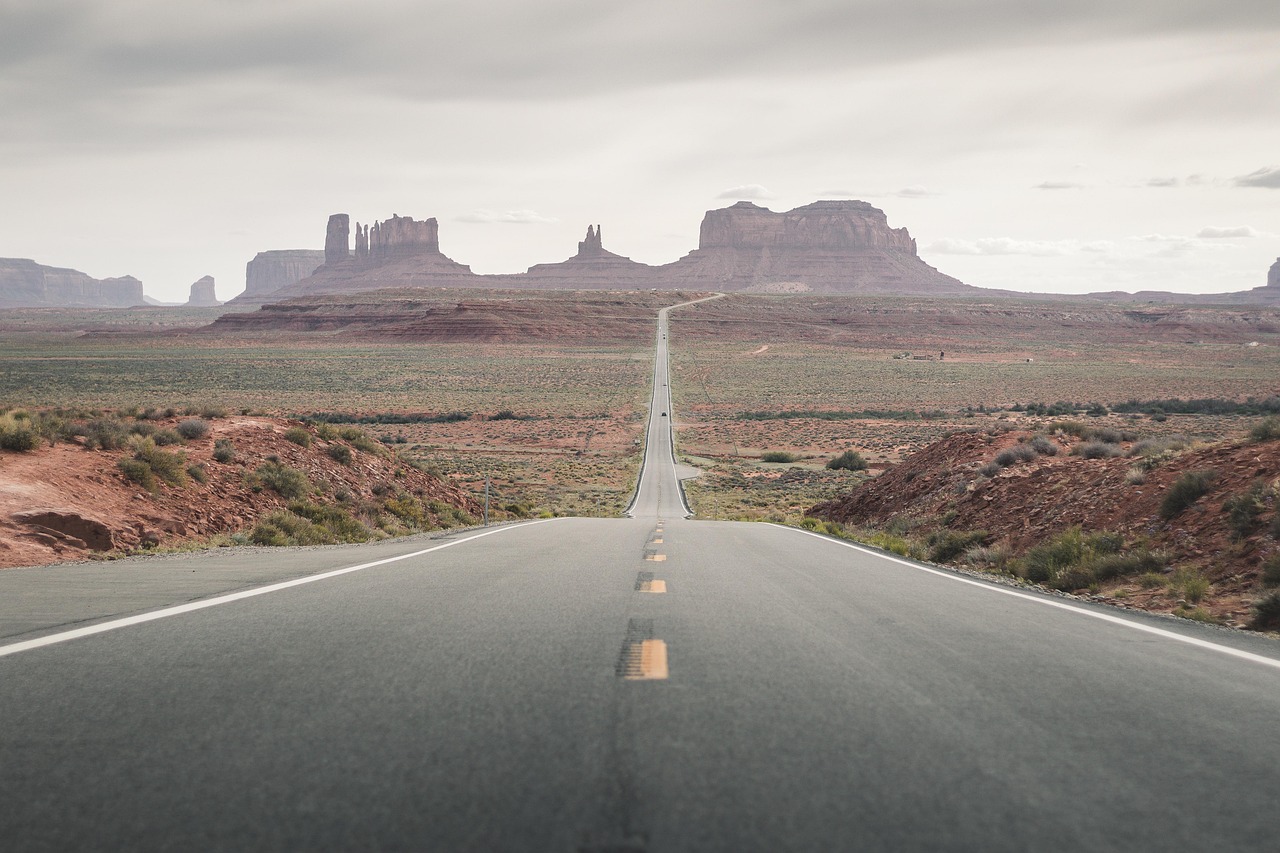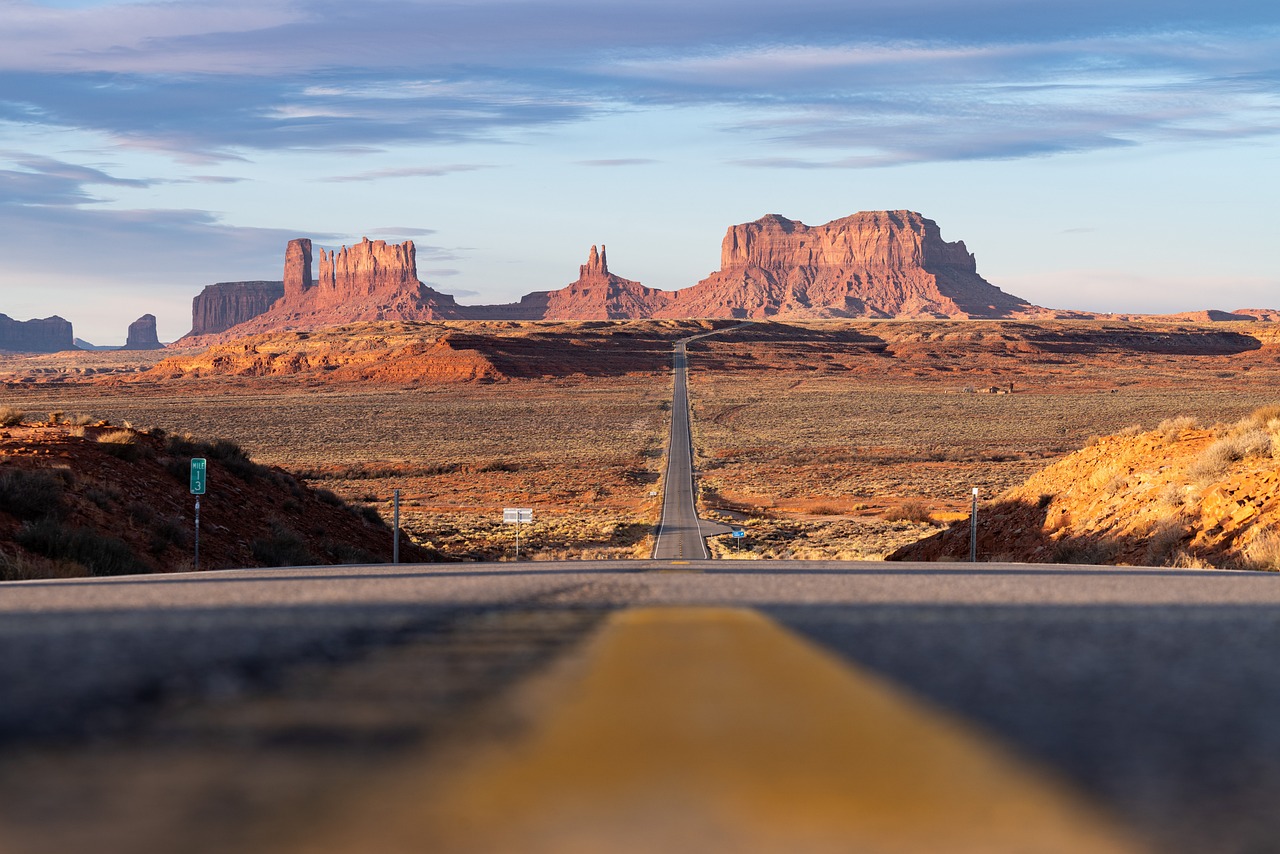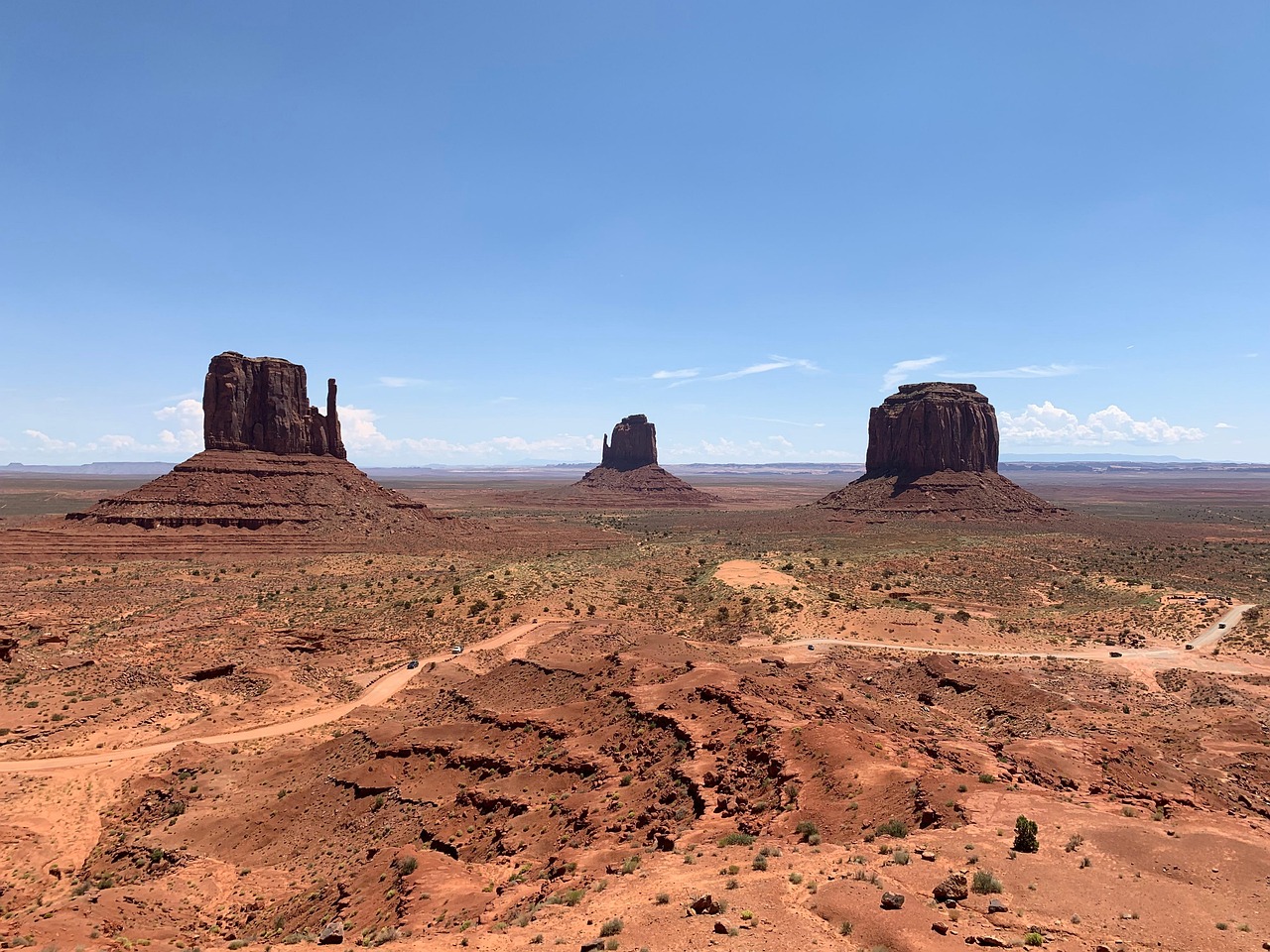If there’s one place that captures the spirit of the American West, it’s Monument Valley. Located on the border of Utah and Arizona, this majestic landscape feels like stepping into another world — a desert of towering red sandstone buttes, endless horizons, and sunsets that seem to set the entire sky on fire.
Whether you’ve seen it in movies, dreamt of it from travel magazines, or are planning your first road trip through the Southwest, Monument Valley is a destination that lingers in your memory forever.
Where the Earth Touches the Sky
Monument Valley sits within the Navajo Nation Reservation, a sovereign territory rich in culture, history, and tradition. The valley’s colossal sandstone formations — some rising over 1,000 feet tall — were shaped by millions of years of wind and water erosion.
Driving through the valley, every turn reveals a new masterpiece: The Mittens, Merrick Butte, and Elephant Butte, each sculpted by time itself. The landscape glows in shades of deep crimson and orange, especially at sunrise or sunset, when the desert seems alive with light.
💡 Fun Fact: Monument Valley’s real name in the Navajo language is Tsé Biiʼ Ndzisgaii, meaning “valley of the rocks.”

A Hollywood Legend
If Monument Valley looks familiar, it’s because it has been a favorite backdrop for Hollywood westerns since the 1930s. Director John Ford filmed classics like Stagecoach and The Searchers here, turning the valley into a symbol of the rugged, untamed frontier.
Even modern films like Forrest Gump have paid tribute — remember the scene where Forrest stops running on a long desert highway? That’s Highway 163, just north of Monument Valley.
🎬 Pro Tip: Pull over at the “Forrest Gump Point” for an iconic photo — it’s one of the most photographed roads in America.
The Navajo Connection
Beyond its beauty, Monument Valley holds deep spiritual meaning for the Navajo people. The land is sacred — each rock formation carries a story passed down through generations. Visitors can join guided tours led by Navajo locals, gaining insight into the legends, songs, and traditions that bring this land to life.
You can even stay in Navajo-owned accommodations or camp under the stars in areas managed by local families, supporting community-based tourism while learning firsthand about their heritage.
💡 Cultural Note: Always ask before photographing Navajo people or private homes. Respecting their customs ensures travelers are welcome for years to come.

Things to Do in Monument Valley
-
🏜 Drive the 17-Mile Valley Loop: The main scenic drive (accessible by car or guided jeep tour) takes you past the valley’s most famous formations.
-
📸 Visit John Ford Point: Named after the legendary director, it’s a must-see overlook for panoramic views.
-
🌄 Watch the Sunrise or Sunset: The colors change by the second — photographers often call it “the magic hour.”
-
🚶 Go on a Navajo-Guided Tour: Explore hidden areas like Mystery Valley or Hunt’s Mesa, which are off-limits to unguided visitors.
-
🏕 Stay Overnight: Wake up to the sunrise painting the buttes gold — there’s nothing like it.
The Land That Defines Freedom
Standing in Monument Valley, surrounded by silence and open space, you can’t help but feel small — and deeply connected to the earth. There’s no city noise, no skyscrapers, no rush. Just the whisper of the wind and the echo of history across the rocks.
It’s no wonder travelers come here to disconnect, reflect, and even plan major life changes — from taking out a travel loan to fund a road trip to starting a travel blog hosting site inspired by their adventures. Monument Valley isn’t just a destination; it’s a reset button for the soul.
💡 Did You Know? Because of its spiritual energy, Monument Valley has been a filming location for documentaries about healing, recovery, and even rehab retreats focusing on mindfulness and reconnection with nature.

History Beneath the Horizon
Millions of years ago, this land was a flat basin. Over time, layers of sandstone, limestone, and shale formed and were gradually eroded by wind and rain, leaving behind the monoliths we see today.
For centuries, the Ancestral Puebloans and later the Navajo made this land their home. Petroglyphs carved into the rocks tell stories of their lives — hunting, ceremonies, and survival.
When European settlers arrived, the valley remained remote and largely untouched. Today, it’s one of the best-preserved natural and cultural landscapes in North America.
Visiting Monument Valley: Tips for Travelers
-
🕒 Best Time to Visit: Spring (April–May) and Fall (September–October) offer comfortable weather and fewer crowds.
-
🚗 How to Get There: The nearest major airport is in Flagstaff, Arizona, about 3.5 hours away.
-
💰 Entrance Fee: Around $8 per person (subject to change), paid to the Navajo Parks & Recreation Department.
-
🏨 Where to Stay: Try The View Hotel — it’s the only hotel inside Monument Valley with rooms overlooking the buttes.
-
📶 Connectivity: Wi-Fi and phone signals are limited — consider this a digital detox!
Fun Facts About Monument Valley
-
Monument Valley’s sandstone towers are as old as 190 million years.
-
Some buttes stand 1,000 feet tall, taller than the Empire State Building.
-
The valley has appeared in over 100 films, commercials, and TV shows.
-
The region’s vivid red color comes from iron oxide in the rock.
-
The Navajo Nation still governs the area — it’s not a U.S. National Park.
Final Thoughts: More Than Just a View
To visit Monument Valley is to stand inside a living painting — one brushed by time, culture, and nature itself. The red earth under your feet carries centuries of stories, while the sky above reminds you how vast and timeless our planet really is.
If you’re looking for a place to feel free, inspired, and alive, this is it. Monument Valley isn’t just a stop on your travel map — it’s a destination that stays in your heart long after you’ve gone.
✨ Related Reads:


